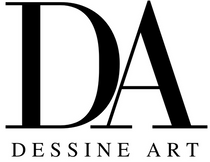Rajasthani Paintings: A Mind-blowing Idea Of Wall Décor
Rajasthan, a land rich in culture and art, has given us one of the most beautiful souvenirs of Classical Indian Art in the form of Rajasthani paintings. Rajasthani folk paintings take you on a complete ride through the cultural heritage of Rajasthan, one of the most vibrant and fascinating regions of India. They are admired worldwide for their bold lines, bright colors, fine detailings and brush strokes that drive the attention of the viewers and leave them awestruck by the beauty of their appearance.
The paintings were produced on paper, canvas and also as wall and ceiling art, extending to miniature carvings and stone carvings on old monuments and buildings. They depicted the stories from ancient and Royal times of Rajasthan, and adorned the Rajputana households of the 17th and 18th centuries.
Rajputana paintings, or Rajasthani paintings started to develop and become famous in the medieval period and reached their pinnacle during the Mughal rule between 15th-17th century. The most common themes of these paintings were Hindu religious epics, the Ramayana and Mahabharata, and the story of Radha and Lord Krishna. The figures are mostly shown wearing traditional Rajasthani attires and the landscapes depict desserts and glimpse of the land of Rajasthan.
Major Rajasthani painting styles
Rajasthani paintings are a choicest option for home decor and wall art. They blend perfectly with any decor theme and carry an aesthetic value due to use of non-synthetic natural colours extracted from plant parts, minerals, valuable stones and shavings of gold and silver.
They depict Royalty in each frame, making them a must have in your decor list if you wish to give a Royal and traditional touch to your home. These paintings make your interiors look elegant and fancy and are an attractive sight to look at.
Rajasthani paintings originated from different styles and each of them have their own unique outlook. These are:
Pichwai paintings
This painting style originated in the 17th century in Nathdwara, in the Udaipur region of Rajasthan. Pichwai paintings were placed at the back of Lord Krishna's idols in the temples and depicted the stories of Krishna’s life. They are considered one of the most beautiful art pieces in the cultural history of our nation.Phad paintings
The great Phad paintings of Bhilwara, in Shahpur is a type of scroll painting. It was a folk painting style where fifteen to thirty feet long pieces of the canvas were combined to form a single big scroll on which the pictures were painted by hand. This vast canvas is known as phad, and hence the name is given as “phad painting”. Phad paintings were most commonly found in the Kings’ courts.
Bhitti Chitra Kala.
This was a type of wall painting from the Bikaner region of Rajasthan, which depicted religious themes that were once practised by the ancient people. This art was usually made on the walls of houses and temples with different colours like Neel(blue); geru( brown), jahri black, safed(white). They were made waterproof by cooking the colours in tisi oil.
Nakashi paintings
Nakashi art or Usta Gesso painting is an intricate art form which is an excellent choice to decorate the walls. It was introduced by the Mughals and some of the traditional samples of these paintings are found on the walls, pillars and ceilings of Bikaner’s Junagarh Fort and Anup Mahal. The motifs used in this were mostly floral, bird and animal figures.
Dabu paintings
A famous art originating from Pali and Jodhpur district of Rajasthan,“Dabu” is a mud resist printing done by using woodblock. Different pictures and stories are carved on the woodblocks, and these are dipped in colour to produce the patches that are made to complete the painting. Dabu paintings make for exquisite wall art to decorate the houses, till date.Miniature paintings
Rajasthani Miniature Paintings, is an exclusive style known for painting done on tiny canvases during the 16th–17th century. A famous style of art form Bikaner, miniature paintings consisted of religious themes and other cultural backdrops which were typically painted using organically produced colors with thin brushes to make fine details.

